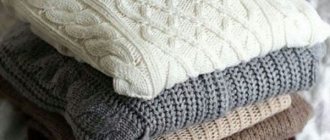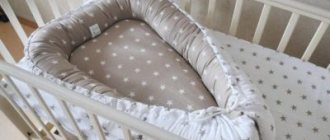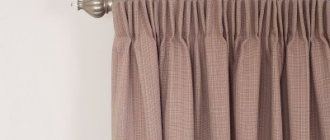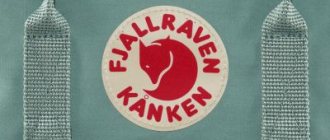A bamboo blanket is made from bamboo fiber, the raw materials for which are the leaves and stems of the plant. The final product is light, breathable and warm.
It is very convenient to use, but when it comes to caring for bedding, many questions immediately arise.
Read the article about how to wash a bamboo blanket, whether it can be washed in an automatic washing machine and what detergent to choose.
Is it possible?
The bamboo blanket can be washed either by machine or by hand. When in contact with water, bamboo does not lose its unique properties. However, before loading it into the drum, you need to pay attention to the following information:
Examine the label that is sewn into one of the side seams of the blanket. It contains basic recommendations for caring for the item, which should not be violated.- Assess the capacity of the drum. If the blanket is large, then it can be washed in a machine with a load of at least 7-8 kg. The fact is that when wet, bamboo fiber increases its weight by 2-3 times.
- In order for the blanket to fit into the drum, it must be folded correctly. To do this, spread it on the floor and roll it lengthwise several times. Then the bedding is rolled into a roll.
- Before washing, you need to inspect the blanket for holes or loose seams. If they are found, they must be eliminated. During active washing, the defects will disperse and become more noticeable.
A bamboo blanket should be washed as it gets dirty.
If it is not in use, it should be folded into a fabric cover and put away in a closet. A bamboo blanket can withstand up to 500 washing cycles, but only if all recommendations are followed.
Dry cleaning as an alternative
Housewives usually take heavily soiled items to the dry cleaner. Yes, it has a number of advantages:
- All the work will be done for you by specialists who know what to do and how to do it, and will not allow the appearance of things to be damaged.
- Dry cleaning removes stubborn stains almost 100 percent, which cannot always be removed at home.
- This method involves cleaning contaminants with organic solvents rather than water, so deformation of the product is practically eliminated.
But dry cleaning is ideal only for certain types of fabric, since the detergents used in this process can corrode the color of the material, which leads to deterioration of the blanket.
Important: dry cleaning of bamboo products is strictly prohibited. Products used to clean stains cause irreparable damage to the filler.
Detergent
When choosing a detergent, you need to give preference to liquid formulations . You can use gel capsules that are loaded into the drum along with the blanket. The concentrates should not contain aggressive components in the form of whiteness, alkali or acid. They will lead to the destruction of fabric fibers.
It is not recommended to use powders in granules, as they do not wash well in cool water and are less easily washed out of a thick blanket. You will have to rinse your bedding at least 4 times.
Top 3 detergents for washing a bamboo blanket:
Synergetic washing gel .
This gentle cleaning concentrate is suitable for both hand and machine washing. You can use it to wash even the bedding that is used in a child’s bed, as it is hypoallergenic. For a 0.75 liter bottle you will need to pay about 70 rubles.- Gel DUO . The universal composition made in Austria can be used to care for white and colored products. This is an economical concentrate, one bottle of which replaces 4 liters of regular washing gel. The cost of a 1 liter package is 470 rubles.
- Washing gel Laska “wool and silk” . This is one of the most popular formulations used to care for delicate fabrics. It is activated in cool water, removes dirt well and quickly rinses out of fabric fibers. The cost of 1 liter of detergent is 275 rubles.
You can purchase any composition in retail stores, in the department with household chemicals. When purchasing, you need to consider the color of the product.
If the bamboo fiber is enclosed in a colored cover, then use a gel that does not contain bleaching components.
Tips for choosing quality products
A closer acquaintance with the world of bed linen shows that choosing the appropriate fabric option can be difficult. The most important recommendation for ensuring the quality of textiles, which has already been discussed, is to avoid purchasing very cheap products. It is almost certain that either low-quality raw materials were used, or the processing technology was violated, or both happened together. It is imperative to find out what the composition of the material is, the ratio of the various fibers in it. Often they say one thing on the label, but the list of components reveals completely different facts.
The main characteristic of the density of bed linen is the number of threads present per 1 square meter. cm per roll. The minimum density is characteristic of cambric and cotton. The middle group includes all synthetic fabrics, and natural fabrics include linen. As for the densest materials, these are silk and satin. The popularity of natural fabric causes an increased price compared to synthetic materials. Also, high cost is typical for bed linen painted with variegated colors.
The quality and safety of dyes is of no small importance. It is natural that the larger the set, the more items it includes, the more significant the cost of the set
You should not buy products that slip or collect static electricity. You have to try, touch the material - it should not leave any unpleasant sensations. For home use, the following properties are important:
- ease of washing;
- drying speed;
- ease of ironing.
Almost always, an improvement in such parameters is achieved by adding a small number of artificial fibers. Only a few natural fabrics can please homeowners with these properties on their own, without impurities. And even a high price is not a guarantee of quality. So you need to carefully study the reviews of previous consumers. A light test is useful - high-quality bedding does not transmit light. At the same time, the fabric structure does not look loose.
In the summer, comfort, external beauty and lightness come to the fore. In the absence of special requirements, you should choose bamboo and linen fabric, which is characterized by exceptional versatility.
Processing in a washing machine
To prevent machine washing from becoming the last thing for a bamboo blanket, you must strictly follow the instructions:
- Prepare the blanket: knock out the dust from it, hand wash difficult stains.
Place the product in the drum of the washing machine.- Pour detergent into the compartment.
- Select washing on a gentle cycle. Some machine models have a “duvet” option. It is ideal for washing bamboo bed linen.
- Set the temperature to 35 degrees.
- Turn on the “extra rinse” function.
- Set the spin speed to no higher than 700 rpm.
- Wait until the washing is completed and send the blanket to dry.
Even if there is serious dirt on the blanket, the water temperature should not exceed 35 degrees. Although bamboo is considered a fairly strong fiber, it cannot withstand such washing.
This video will show you how to wash a bamboo blanket in a washing machine:
What to do if an unpleasant odor appears after cleaning
Sometimes, after cleaning, a product with bamboo filling emits an unpleasant musty smell.
There may be several reasons for the appearance of such an aroma:
- improper drying, due to which moisture does not evaporate completely and mold appears;
- storing the blanket in an airtight container for a long time.
To eliminate the smell, you should wash the fabric again using regular baking soda or 9% vinegar. Add 10 ml of baking powder or 1 spoon of table acid to the compartment for the bulk product. Then it is advisable to spin the product again using conditioner to remove the smell of vinegar.
Important: ironing blankets with bamboo filling is prohibited.
Manual cleaning of products with bamboo filling
Hand washing is more gentle, but labor-intensive. This is especially true when processing massive double or “Euro” blankets.
Washing is possible only in the bathroom, since there is no more suitable container in the apartment. It is not recommended to soak the product, because bamboo fiber does not tolerate prolonged contact with water.
Instructions for hand washing the product:
- knock out the dust from the blanket, wash areas with persistent dirt;
fill the bath with water at a temperature of up to 35 degrees;- dilute the detergent until rich foam forms;
- immerse the blanket in the water, you need to submerge it with your hands until it stops floating;
- walk over the surface of the product with a soft brush or sponge;
- drain the dirty water, rinse the item until the foam is completely washed away;
- leave the product in the bathroom until the water drains from it;
- Periodically, the blanket needs to be turned over and slightly wrung out.
The product must not be twisted or rolled into a bundle so that it does not lose its original shape.
Washing a blanket by hand
If you are afraid to entrust an expensive product to an automatic washing machine, then it’s okay if you decide to wash it yourself. The algorithm of actions in this case is as follows:
- It is best to wash the product in a large container. Ideally, the bath plays its role. Fill it with warm water - not hotter than 40 degrees. Otherwise, your bamboo blanket will simply lose its shape.
- Do not soak the blanket - a long stay in water is extremely undesirable for bamboo filling.
- We also choose liquid detergent - it is much easier to wash it out of the product manually, without the help of machinery. And if the powder is not stretched to the end, it will cause the fibers of the material to stick together into clumps.
- We advise you to first thoroughly stir the detergent into the water, and then load the blanket into the bath. If you pour the washing solution directly onto the material of the product, it is unlikely to be useful for it.
- It’s great if you have an assistant - a blanket that has become heavy from water is not easy for one person to move.
- Do not rub or “squeeze” the product vigorously when washing - only gently whisk in water.
- The spin should also be gentle. Do not twist or wrinkle the blanket! Just gently squeeze the water out of the product with your hands.
Only liquid products!
Removing difficult stains
If complex stains appear on a bamboo blanket, they can be treated with improvised means that work no worse than household stain removers. You can safely clean the problem area using compounds such as:
- Laundry soap . It is grated and diluted with a small amount of water. The resulting slurry is applied to the contaminated area and left to act for 30 minutes. Then rub the stain with a brush and rinse the fabric in cool water.
- Ammonia . It is applied to a cotton pad, which is used to wipe the stain until it completely disappears.
- Soda and vinegar 9% . Sprinkle soda on the contaminated area, rubbing it into the fiber with your fingertips. The top is treated with a sponge dipped in vinegar. After the reaction is completed, the product is washed using detergents.
- Hydrogen peroxide . It is applied to the stain, left for 20 minutes, scrubbed with a soft brush and washed in cool water. Peroxide can only be used on light-colored fabrics.
- Baby powder or starch . These bulk substances are used to combat greasy stains. They are applied to the fabric, rubbed in with your fingers and left for 12 hours. Then clean the area with a soft brush. If the stain does not disappear, it can be treated with dishwashing gel mixed with salt.
Although these products are safe to use, they should not be applied directly to a large area of the blanket. The first time you need to try the composition on an inconspicuous area.
Types of calico for bed linen
The defining characteristics of fabric are density and color. Depending on these characteristics, the following types of calico for bed linen are distinguished:
- Harsh. Cream color, highest density. It is practically not used for the manufacture of linen sets.
- Bleached. It is inferior to the previous variety in density and thickness. It's quite inexpensive.
- Plain painted. Widely used for the manufacture of clothing and linen sets, it is distinguished by a solid color.
- Printed. The best option for children's sets; instead of painting in one tone, a colored pattern is used.
However, fabrics containing synthetic components are now widely used. Read more about all types of material: “How to choose bed linen?”
Drying rules
Drying, along with washing, is an equally important step in caring for a bamboo blanket. To prevent the product from becoming covered with streaks and losing its original appearance, you must adhere to the following recommendations:
dry the blanket on a flat surface - you can lay terry towels under it, which will absorb excess moisture;- you cannot hang it on a rope so that the filler does not bunch up in one direction;
- the unfolded product is felt with your hands, straightening all existing seals;
- bamboo does not tolerate contact with high temperatures, so you cannot speed up the drying process with a hairdryer or heating radiator;
- If possible, the item is taken out into the fresh air.
As the moisture evaporates, the bedding should be shaken and turned over.
Incredible properties of raw materials
The special properties of bamboo blankets are explained by the most valuable qualities of the raw materials. The young plant is collected in ecologically clean areas of China. For 3-4 years of its life, it did not know chemical fertilizers that cause special growth, because bamboo is rightfully considered one of the fastest growing species. Bamboo groves do not suffer from fungal diseases; they are not afraid of pathogenic bacteria, mites and dangerous insects.
A unique plant, which is a symbol of purity and longevity in the East, does not need to be treated with pesticides; it has a natural ability to self-purify and protect.
- The bactericidal property of bamboo is one of the most important characteristics of all products made from this raw material.
- In terms of strength and durability, bamboo is not inferior to steel. This explains the durability and wear resistance of blankets made from this plant.
Helpful information
Information that may be useful to all owners of a bamboo blanket:
Machine wash should be used only when necessary. If the contamination is minor, you can limit yourself to local washing.- The bamboo blanket cannot be ironed.
- The duvet cover can only be put on after the filling has completely dried. Otherwise, the product will be prohibited.
- To remove dust, you can simply knock out the blanket or vacuum it.
- For preventive purposes, bedding is washed once every 6 months.
You will find a lot of useful and important information about washing blankets here.











